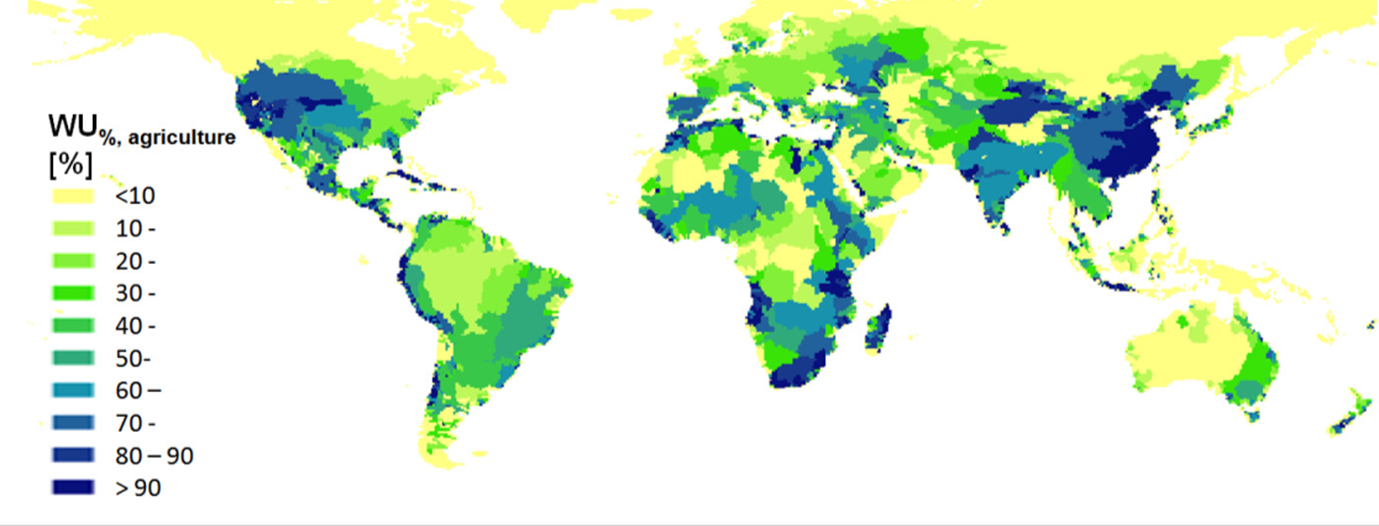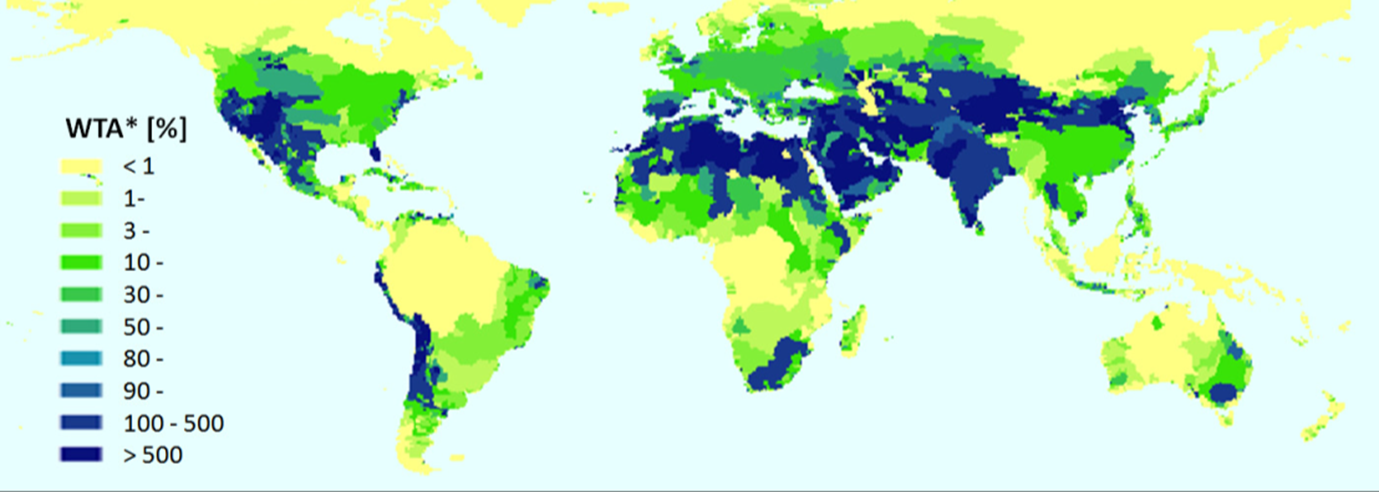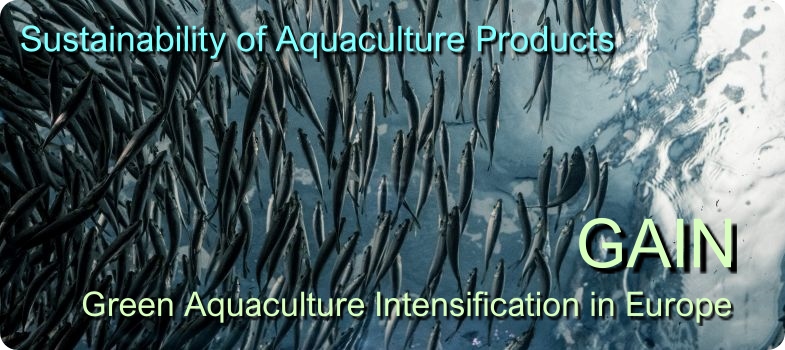Water consumption
Although inland aquaculture is associated with a lot of freshwater dependencies and use, the majority of that is returned to the watercourse, albeit with altered quality characteristics such as suspended solids and dissolved nutrients. Actual freshwater consumption is more associated with the provision of feed ingredients and therefore the trade-off between marine ingredients and terrestrial is similar.


Figure 3a) % Water used for agriculture, b) Global water scarcity factor (WTA*); extraction to availability. Source: (Pfister et al., 2009)
Water consumption footprints can be split into three categories; green, precipitation, and surface run-off; blue, abstracted from watercourses, lakes, and groundwater; grey, the freshwater that is required to return polluted water to its natural state. The most important category is blue water as it is often being abstracted faster than it can be recharged by precipitation as can be seen in Figure 3. Green water is also important because rainwater that is captured and used may result in loss of recharge to watercourses and groundwater. Greywater is more controversial because the definition of the “natural” state of water is subjective, the water required depends on the assimilative capacity of the returning water body and the affected water may still be used for other purposes such as industrial uses or other agriculture. Water consumption in marine ingredient production is considerably lower than for terrestrial ingredient production although the location of production is important to consider as some areas are much more water-stressed, such as North Africa Western USA and Central Asia.
